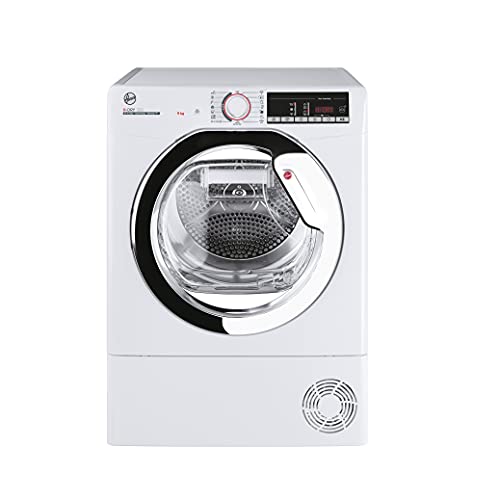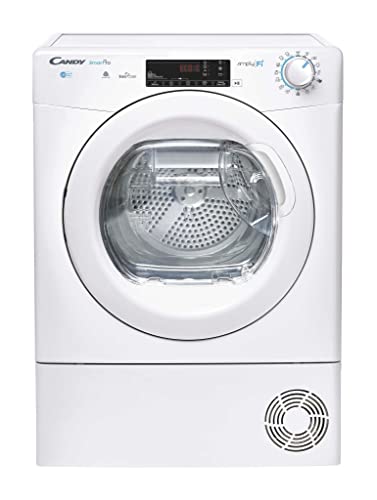Where Is Washer Dryer With Heat Pump Be 1 Year From This Year?
페이지 정보
작성자Rae Platz 댓글댓글 0건 조회조회 9회 작성일 24-05-01 02:13본문
 Heat Pump Washer Dryer - A Revolution in All-In-One washer dryer with heat pump-Dryer
Heat Pump Washer Dryer - A Revolution in All-In-One washer dryer with heat pump-DryerA revolution in all-in-one dryers and washers is in progress. We've tested 2 large efficient heat pump units that wash and dry in less than two hours and use only 120-volt outlets.
Heat pump combos cool the air to eliminate moisture, unlike traditional clothes dryers which blast hot air over your tumbling laundry. They consume less energy in general in comparison to other dryers.
What is a What is a Pump Dryer?
Unlike standard electric dryers that are heated by electric resistance or gas combustion and then blow the humid, warm air out via vents that need to be vented to the outside, heat pump or tumble dryers heat pump vs condenser with ductless cooling cool the air and trap the moisture inside. They don't require venting out because they reuse heat and moisture inside the dryer.
These dryers are also energy efficient, meaning you'll reduce your electric bills. These dryers are also cheaper to run than conventional ones and last twice as much. They are also eco-friendly and are a major draw for most consumers.
Heat pump dryers that are ENERGY STAR-certified are designed to provide the best performance and efficiency. They have several features that set them apart from standard dryers. They have moisture sensors to prevent drying too long and prevent clothes from fading or shrinking, smart settings to customize your laundry routine, and Washer Dryer With Heat Pump remote control via smartphone.
In addition to their cost-effectiveness and efficiency, heat pump dryers are also safer than conventional dryers as they don't use vents for dryers. This reduces the risk of lint accumulation inside the vent, and possible fires. They are ideal for apartment dwellers because they can be used wherever.
Another benefit of heat pump dryers is that they use a lower temperature than conventional dryers, allowing your clothes keep their shape and color for longer. This can also mean that it takes a little longer to dry your clothing.
The final benefit of heat pump dryers is that they don't require a vent, so they are a lot simpler to set up than traditional dryers. Heat pump dryers can be placed anywhere in your home as long they have access to drains. Heat pump dryers are quieter and environmentally friendly than traditional dryers. They are an excellent choice for homes with pets or small children.
The use of heat pump dryers is becoming more popular in the United States, but they have been a favorite choice in Europe for several decades. With their remarkable efficiency in energy and cost savings, it's no wonder why increasing numbers of homeowners are opting to buy a washer dryer that has a heat pump.
What are the Benefits of a Heat Pump Dryer?
Heat pump washer-dryers are about half the energy used by conventional vented dryers. They are therefore extremely energy efficient and can help reduce household electricity bills.
As their name suggests heat pump dryers do more than provide your clothes with hot air. They also remove moisture from them by bringing out dry air from the surrounding environment and then reusing that same air throughout the drying process. This keeps your laundry fresh and prevents wrinkles while also reducing moisture in your home.
Additionally, they can reduce the burden on your air conditioner, and thus save you money. This is a great benefit for those who reside in humid climates and who frequently use dryers.
Heat pump dryers remove moisture from your laundry using evaporative cooling, unlike traditional vented dryers which release warm, humid air into the atmosphere. This results in a cooler, dehumidified atmosphere within your laundry. This is an appealing option for homes that do not have the space or budget to install a separate duct for venting out humid air.
Because they do not have to heat their clothes using conventional heating elements like vented dryers, a heat pump dryer is able to run at lower temperatures and is gentle on clothes. Some heat pump dryers never attain their maximum temperature, keeping your clothes in good shape and more secure for a longer period of time.
The dryers with heat pumps are more expensive at first however they will save you lots of money and energy in the long run. These dryers are a great investment for those who want to reduce their environmental footprint while reducing their utility bills.
In recent years, heat pump dryers have become more popular than ever. Manufacturers have also managed to make them more affordable. The technology behind these machines is constantly improving, making them more user-friendly and efficient. These washer-dryers are an excellent investment that will save energy and the environment over the long term.
How Does a Heat Pump Dryer Work?
Standard vented dryers are a simple piece of equipment when it comes to washing clothes. A sheet of metal with an electric motor, heater and fan. However, a heat pump dryer is a totally different creature. These dryers are stuffed with a variety of high-tech technologies that provide them with their energy efficiency and price cost.
They are efficient because they don't just dry your clothes however, they also recycle heat from the air back into your clothes. The process starts with a blower that spits air through fins on the cold side of the dryer and then through fins on the hot side. It may seem counterintuitive however, why do you need to spend electricity cooling the air and reheating it? But it's an great way to cut down on energy usage.
The system reverses the cycle to warm the lint. The result is that your clothes get dried in the same amount of time as a traditional vented dryer, but at a the lower cost per load.
Heat pump dryers are also advantageous since they don't require vents. They can be put in within any room of the house or apartment, including tiny spaces like closets, bathrooms, and bedrooms. They're even more flexible than a dryer/washer combination since they don't require an outside wall for ventilation.
While these dryers do not require vents however, they must drain. This can be accomplished using a built-in drawer that can hold water for two cycles or by connecting a pipe to the dryer and letting it flow out of a window. This is a minor issue when compared to traditional dryers that require lint screens to be cleaned every cycle and condensation coils to be defrosted manually at least once or twice a month.
In the moment they are a bit more expensive than their conventional counterparts, but the upfront purchase will be repaid through lower costs for utilities. Additionally, a number of states and local utilities provide rebates and incentives to help lessen the burden of purchasing costs.
How can a Heat Pump Dryer Save Energy?
A heat pump dryer recycles its energy, just as the name suggests. In actual fact, it consumes much less energy than traditional electric dryers most households make use of. The reason for this is that it doesn't heat the air directly. Instead, it uses the same technology that makes air conditioning work by compressing a fluid (like refrigerant) and then heating the resulting vapor. The vapor is then pumped through the drum of the dryer which absorbs it and assists in drying your clothes.
The heat pump's second role is to reuse the heated vapor that flows back through the drum after having gone through the drying process. This is known as reversible operation. The heat pump repeats this process several times, capturing heat. The heated air is then released into the building to warm up the building's inhabitants.
Ventless heat pump dryers, unlike vented dryers, push the moisture-laden indoor air through a closed circuit that cools it, sucks out the water, and is drained into a washer drain pipe or into the floor drain or sink. This means you can avoid the dryer vent and helps lower humidity inside, particularly in a sealed enclosure for buildings.
When needed for a particular situation, a heat pump dryer can be used in conjunction with an electric evaporator to add hot water to the cooling circuit. This can cut down on energy consumption by up to 30%..
It is important to know that heat pump dryers may not be suitable for every household. The initial cost is more than traditional electric dryers, and the operating savings aren't as high for most families. Because of this, Yale Appliance estimates that these dryers will likely appeal to "households that have a high use of dryers for clothes and high electricity costs."
 There is one major incentive for many families to consider using a dryer with a heating element because of the government policy. In the United States, you can get rebates that drastically reduce the cost of these appliances. The economics of the new laundry device is compelling.
There is one major incentive for many families to consider using a dryer with a heating element because of the government policy. In the United States, you can get rebates that drastically reduce the cost of these appliances. The economics of the new laundry device is compelling.댓글목록
등록된 댓글이 없습니다.
